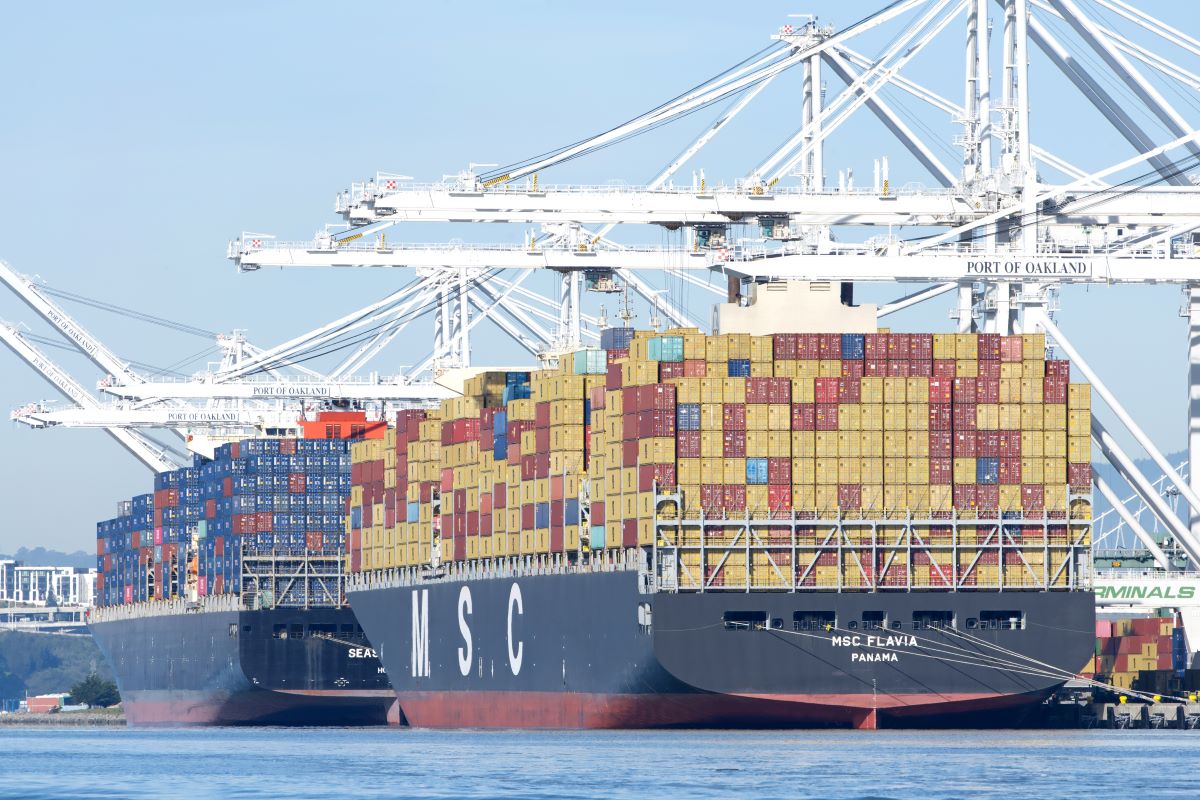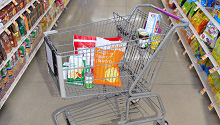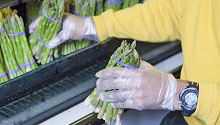By: Doug Baker, Vice President, Industry Relations, FMI

The Super Bowl isn’t just a championship game, it’s also one of the biggest food events of the year. Whether it’s wings, pizza or chips, the food industry supply chain plays a critical role in ensuring fans have their favorite game-day snacks. Behind every spread of delicious bites is a complex web of farmers, manufacturers, distributors and retailers working seamlessly to meet the massive demand for food on Super Bowl Sunday. Just like in football, keeping the supply chain moving requires team effort.
The Game Plan: Prep for Super Demand
Retailers and food suppliers begin preparing months in advance to handle the Super Bowl surge. Data analytics and consumer trends help forecast demand, ensuring that warehouses and grocery stores are stocked with high-demand products. Popular game-day foods see a significant spike in sales—Americans consume approximately 1.45 billion chicken wings during the Super Bowl weekend, according to industry estimates.
Distributors and suppliers must work closely with food manufacturers to meet these spikes in demand. Adjustments in production schedules, additional trucking logistics and strategic inventory management all come into play.
Logistics & Complications: Delivering for Game Day
Transportation is a key player in the food supply chain, and with millions of people hosting Super Bowl parties, the efficiency of food distribution is critical. Trucks, warehouses and cold storage facilities ensure fresh produce, meats and dairy products arrive at grocery stores and restaurants just in time for the weekend rush.
Additionally, the rise in ecommerce and grocery delivery services has added another layer of complexity. Many consumers now rely on online orders for their game-day groceries, increasing the demand for last-mile delivery networks to function at peak efficiency.
Despite extensive planning, the food supply chain faces ongoing challenges, including labor shortages, weather disruptions and transportation bottlenecks. However, technological advancements like artificial intelligence (AI) for demand forecasting, production planning, and optimizing routes, and automation in warehouses have helped improve efficiency and reliability. Additionally, per The Food Retailing Industry Speaks 2024 report, advancements and investment in supply chain and trucking helped drive a dramatic drop in retail out-of-stock rates, which fell from 10.7% in 2022 to 6.5% in 2023. Close collaboration between retailers and suppliers on supply chain logistics continues to ensure that food safety and quality standards are upheld, particularly with perishable game-day favorites like fresh dips, meats, and dairy-based products.
The Final Whistle: A Winning Supply Chain
The Super Bowl is a high-stakes event not just for teams on the field but also for the food industry professionals working behind the scenes. Thanks to the resilience and innovation of the food supply chain, fans can enjoy their favorite snacks while cheering on their team. From farm to kickoff, a well-executed game plan ensures Super Bowl Sunday remains a feast for all.
As you enjoy the game this year, take a moment to appreciate the intricate supply chain that makes it all possible—because in the food industry, every link in the chain is essential to delivering a winning experience.
Looking for more supply chain insights?


 Industry Topics address your specific area of expertise with resources, reports, events and more.
Industry Topics address your specific area of expertise with resources, reports, events and more.
 Our Research covers consumer behavior and retail operation benchmarks so you can make informed business decisions.
Our Research covers consumer behavior and retail operation benchmarks so you can make informed business decisions.
 Events and Education including online and in-person help you advance your food retail career.
Events and Education including online and in-person help you advance your food retail career.
 Food Safety training, resources and guidance that help you create a company food safety culture.
Food Safety training, resources and guidance that help you create a company food safety culture.
 Government Affairs work — federal and state — on the latest food industry policy, regulatory and legislative issues.
Government Affairs work — federal and state — on the latest food industry policy, regulatory and legislative issues.
 Get Involved. From industry awards to newsletters and committees, these resources help you take advantage of your membership.
Get Involved. From industry awards to newsletters and committees, these resources help you take advantage of your membership.
 Best practices, guidance documents, infographics, signage and more for the food industry on the COVID-19 pandemic.
Best practices, guidance documents, infographics, signage and more for the food industry on the COVID-19 pandemic.
